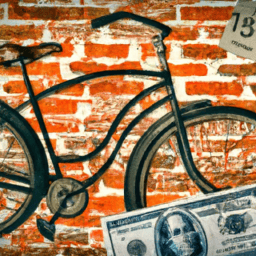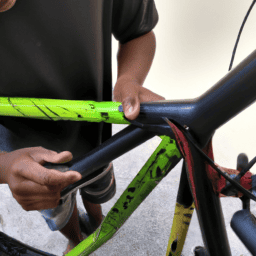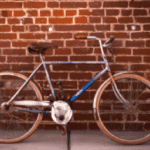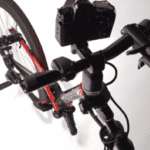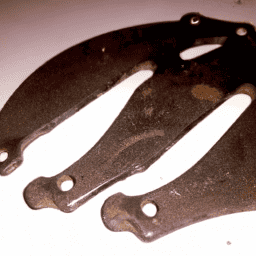Are you contemplating selling or trading your bicycle? Before listing it for sale, it’s crucial to understand its value.
There are several factors that contribute to a bike’s value, including its age, condition, and brand. By understanding these factors and doing some research, you can determine a fair price for your bicycle and maximize your profits.
First, consider the age of your bicycle. Generally, the older the bike, the less it is worth. However, there are some exceptions to this rule: vintage or antique bicycles may be worth more due to their rarity or historical significance.
Next, take a careful look at your bike’s condition. Are there any scratches, dents, or other signs of wear and tear? If so, these will likely decrease the value of your bicycle.
Finally, consider the brand of your bike. Some brands are more desirable and therefore more valuable than others.
By taking these factors into account, you can get a better idea of how much your bicycle is worth.
Key Takeaways
- Age, condition, brand, rarity, and historical significance are factors that affect the value of a bicycle.
- To determine the value of a bicycle, one should research market prices, check online resources like Bicycle Blue Book and eBay, check with local bike shops, assess the bike’s condition, consider maintenance history and upgrades, and set a fair price.
- When selling a bike, being confident in the value, communicating clearly and concisely, being open to negotiating, maximizing value through maintenance and upgrades, highlighting unique features and characteristics, and reaching a mutually beneficial agreement are important.
- Keeping the bike clean and well-maintained, having high-end components, and using effective communication strategies can help maximize the value of a bicycle.
Factors that Affect Bicycle Value
The value of a bicycle can be influenced by several factors, including its condition, brand, and age. One of the most important factors to consider is the bicycle’s rarity. If the bicycle is a limited edition or a vintage model, it may be worth more than a standard model.
Additionally, brand recognition can also play a role in determining value. Bicycles from well-known brands with a strong reputation in the cycling community are typically worth more than lesser-known brands.
Another important factor to consider is the bicycle’s condition. A bicycle that has been well-maintained and kept in good condition is generally worth more than a bicycle that has been neglected or poorly maintained.
Age is also a consideration, but it is not always a determining factor. A well-maintained vintage bicycle can be worth more than a newer bicycle that has been poorly maintained.
Now that you know what factors can affect the value of your bicycle, it’s time to start researching market prices to determine its true value.
Researching Market Prices
When it comes to researching market prices for your bicycle, there are a few key points to keep in mind.
Firstly, online resources can be a great starting point to get a general idea of what other similar bikes are selling for.
Secondly, don’t underestimate the value of checking with your local bike shops, as they may have a better understanding of the local market and demand.
Finally, consider looking into bike trade-in programs, as they can often offer competitive pricing for your used bike.
By utilizing these resources, you can gain a better understanding of the value of your bicycle and make informed decisions when it comes to selling or trading it in.
Online Resources
You can easily find out the value of your bicycle by checking out online resources like Bicycle Blue Book or eBay. These websites offer a comprehensive appraisal of your bike using various factors such as the brand, model, and condition. If you own a vintage bike, these resources also provide a specialized valuation based on the rarity and age of your bicycle.
Bicycle Blue Book and eBay are great resources to start with, but it’s important to keep in mind that the value of your bike may vary depending on your location and the demand for it. Checking out local bike shops can give you a better idea of how much your bike is worth in your area. These shops have a good understanding of the local market and can provide an accurate appraisal based on the condition and popularity of your bike.
Local Bike Shops
Visiting local bike shops can give you a better understanding of the demand and value of your bike in the area. Bike shop services, like repair and maintenance, can also help increase the value of your bike. Some bike shops offer community events, like group rides, which can connect you with other cyclists and potential buyers.
When you visit a local bike shop, bring your bike with you, and ask the staff for their opinion on the value of your bike. They’ll likely take a look at the condition of your bike and its components to determine its value. They may also suggest upgrades or repairs that can increase its value.
Additionally, some bike shops may offer to sell your bike on consignment, which can increase your chances of selling it for a fair price.
By visiting local bike shops, you can gain valuable insight into the demand and value of your bike in your community. However, if you’re looking to upgrade to a new bike, you may want to consider a bike trade-in program.
Bike Trade-In Programs
If you’re considering upgrading your ride, it might be worth checking out bike trade-in programs at your local shop. These programs allow you to trade in your old bike and receive up to 20% off a new one. This can be a great option for those who want to upgrade their ride without breaking the bank.
There are both pros and cons to using a bike trade-in program. On the one hand, you can save money on a new bike and get rid of your old one in the process. On the other hand, you may not get as much money for your old bike as you would if you sold it privately. Additionally, some bike shops may only accept certain types of bikes for trade-in, so be sure to check with your local shop before assuming you can trade in any bike.
If a trade-in program doesn’t seem like the right fit for you, consider other alternatives such as selling your bike online or donating it to a local charity.
When it comes to assessing your bike’s condition, there are a few things to keep in mind.
Assessing Your Bike’s Condition
Assessing your bike’s condition is crucial in determining its value. A visual inspection will reveal any visible damage to the frame, wheels, or components. Check for any cracks, dents, or scratches on the frame, as well as any rust or corrosion on the metal parts. Take note of the wear and tear on the tires, brakes, and drivetrain. These are all factors that can affect the bike’s value.
In addition to the visual inspection, consider the maintenance history of the bike. Has it been regularly serviced and maintained? Are there any recent upgrades or replacements? These can add value to the bike.
Also, compare your bike to similar models and take into account the rarity of your specific make and model. These factors can play a role in determining the bike’s value.
Now that you have assessed the bike’s condition, it’s time to set a fair price for it.
Note: The subsequent section about ‘setting a fair price’ will cover aspects such as researching the market value, considering any upgrades or accessories, and negotiating with potential buyers.
Setting a Fair Price
When setting a fair price for your bike, it’s important to balance the market value with your own personal value of the bike.
Consider factors like the bike’s age, condition, and any upgrades or modifications you’ve made.
When negotiating with potential buyers, be prepared to justify your asking price with evidence of the bike’s value and any maintenance or repairs you’ve done.
Remember, finding a fair price for both you and the buyer is key to a successful sale.
Balancing Market Value and Personal Value
Finding the true value of your bicycle can be tricky as it involves balancing the market value with your personal attachment, but don’t let sentimentality cloud your judgement. Emotional attachments and sentimental value can make it difficult to accept a lower price, but it’s important to remember that bicycles, like most other products, are subject to depreciation rates. Brand recognition can also play a role in determining the market value of your bicycle, as popular brands often have a higher demand, resulting in a higher resale value.
To help balance your personal attachment with market value, it’s important to research the supply and demand for your particular make and model. Online marketplaces such as eBay and Craigslist can provide insight into what similar bicycles are selling for, as well as private sales and trade-in deals at local bicycle shops. To further aid in determining a fair price, consider creating a table comparing the market value with your personal attachment and any additional features or upgrades that may increase the value. By keeping these factors in mind, you can ensure that you are setting a fair price for your bicycle without letting sentimentality cloud your judgement. Now, when it comes to negotiating with buyers…
Negotiating with Buyers
Now that you’ve got a better understanding of how to balance market value and personal value when determining the worth of your bicycle, it’s time to focus on negotiating with potential buyers.
This can be a daunting task, especially if you’re not used to haggling or negotiating prices. However, there are some best practices and communication strategies that you can use to help you navigate this process.
First and foremost, it’s important to be confident in the value of your bicycle. Make sure you’ve done your research and have a solid understanding of its worth.
When communicating with potential buyers, be clear and concise about the features and condition of the bike and why you believe it’s worth the asking price. Be open to answering any questions they may have and don’t be afraid to negotiate if necessary.
Remember, the goal is to reach a mutually beneficial agreement that both parties are happy with.
Now that you have some negotiation strategies under your belt, it’s time to focus on maximizing the value of your bicycle.
There are several tips and tricks that can help you increase the worth of your bike, such as performing regular maintenance and upgrades, keeping it clean and well-maintained, and showcasing its unique features and accessories.
By following these tips and utilizing effective communication strategies, you can ensure that you’re getting the most value out of your bicycle when it comes time to sell.
Tips for Maximizing Your Bicycle’s Value
To get the most money for your bicycle, you’ll want to follow these tips for maximizing its value.
First, consider any custom modifications you’ve made to the bike. These can add value to the bike, but only if they’re high-quality and well-done. If you’ve added components that are in high demand, like a high-end suspension fork or carbon-fiber handlebars, that can increase the bike’s value. However, if you’ve made modifications that are purely cosmetic or that lower the bike’s performance, they may not add value and could even decrease the bike’s worth.
Another way to maximize your bicycle’s value is to consider the bike’s age and rarity. Vintage models can be highly sought after, especially if they’re in good condition and have original components. If you have a vintage bike, do some research to find out its value and be prepared to communicate its worth to potential buyers.
Similarly, if you have a newer bike that’s in high demand, like a model that’s difficult to find or has a lot of buzz in the cycling community, that can also increase its value.
Overall, understanding the unique features and characteristics of your bike and highlighting them to potential buyers can help you get the most money for your bicycle.
Frequently Asked Questions
How do I determine the age of my bicycle?
Did you know that bicycle manufacturing techniques have evolved significantly over the years? When dating vintage bicycles, look for features such as the frame material, brake type, and logo design to determine its age.
Can I sell my bicycle without a title or registration?
Before selling your bicycle, check your state’s legal requirements for title and registration. Some states may not require them for bicycles, but others do. Research the selling process and follow all necessary legal steps to avoid any complications.
How much should I expect to spend on repairs before selling my bicycle?
Before negotiating a sale price, estimate repair costs for your bicycle. Analyze each component, from the tires to the brakes, to provide a knowledgeable and detailed assessment. Use imagery to convey the importance of thorough evaluation.
What is the best way to advertise my bicycle for sale?
To effectively advertise your bicycle for sale, consider social media advertising, which allows you to reach a broad audience. Additionally, word of mouth marketing can be effective in reaching potential buyers within your social circle.
Should I consider donating my bicycle instead of selling it?
Considering donating your bicycle has pros and cons. On one side, it can have a positive impact on the community. On the other, you won’t get any money from it. It’s up to you to decide.
Conclusion
Congratulations! You’ve successfully navigated the process of determining the value of your beloved bicycle. By taking into account the factors that affect its worth, researching market prices, assessing its condition, and setting a fair price, you’ve ensured that you get the most out of your investment.
Remember that bicycles hold sentimental value and can be a means of transportation, exercise, and fun. They’re more than just a material possession. So, when it comes to setting a price, try to approach it with a fair and reasonable mindset.
By following the tips for maximizing your bicycle’s value, you can feel confident in your decision and hopefully make a successful sale.
Happy cycling!
